Ürün Özellikleri
Stok Kodu
9786059354684 Boyut
160-240-0 Sayfa Sayısı
332 Basım Yeri
ANKARA Basım Tarihi
2022-07-26
Kapak Türü
Karton
Kağıt Türü
Kitap Kağıdı
Dili
Türkçe
Contents
Chapter 1. OVERVIEW OF THE NERVOUS SYSTEM (L. Pinar)
Organization of the Central Nervous System....................................................... 4
General Functions of the Main Parts of the Brain................................................ 4
Cerebrum............................................................................................................... 4
Brainstem............................................................................................................... 5
Cerebellum............................................................................................................ 6
Meninges (Meninx).............................................................................................. 6
Cerebrospinal fluid (CSF) .................................................................................... 6
Blood Brain Barrier (BBB)..................................................................................... 6
Cranial Nerves....................................................................................................... 7
REFERENCES............................................................................................................... 9
Chapter 2. BIOELECTRIC POTENTIALS OF THE EXCITABLE CELL (L. Pinar)
Resting Membrane Potential................................................................................. 13
Generation of the resting membrane potential............................................ 14
Individual Ions Involved in the Resting Membrane Potential..................... 15
Nernst Potentials: Equilibrium Potentials of Ions.......................................... 15
The Equilibrium (Nernst) Potential of Potassium.......................................... 16
The Equilibrium (Nernst) Potential of Sodium............................................... 17
Calculation of the Sum Effects of Several Permeable Ions on the
Resting Membrane Potential: Goldman-Hodgkin-Katz Equation............... 18
Gibbs Donnan Effect ......................................................................................... 18
The Effects of Na-K ATPase on Membrane Potential................................... 20
The Membrane of Excitable Cell...................................................................... 20
Action Potential.................................................................................................. 22
Investigation of Ion Channels: Voltage Clamp and Patch Clamp Techniques 26
REFERENCES............................................................................................................ 27
Chapter 3. NERVE PHYSIOLOGY (L. Pinar)
Glial Cells ................................................................................................................. 31
Astrocytes............................................................................................................ 31
Functions of Astrocytes..................................................................................... 32
Oligodendrocytes............................................................................................... 32
Schwann cells..................................................................................................... 33
Microglia.............................................................................................................. 33
Ependymal Cells................................................................................................. 33
Neurons..................................................................................................................... 33
The Functional and Structural Parts of a Typical Neuron............................. 33
Myelinated and Unmyelinated Neurons........................................................ 35
Distribution of Ion Channels in Neurons........................................................ 36
Conduction of the Action Potential Along the Axons.................................. 37
Orthodromic and Antidromic Impulse Conduction...................................... 39
Mixed Nerves...................................................................................................... 39
Nerve Fiber Types.............................................................................................. 40
Transport of Proteins in the Axons ................................................................ 41
Neurotrophic Factors......................................................................................... 41
Degeneration and Regeneration of Nerve Fibers........................................ 42
Demyelinating Diseases................................................................................... 43
Effects of Changing Concentrations of Plasma Ions on the
Excitability of Nerves......................................................................................... 43
Rhythmicity of Some Excitable Tissues........................................................... 45
Electrotonic Potentials, Local Response ........................................................ 45
Clinical Aspects........................................................................................................ 46
Channelopathies (Ion Channel Myopathies)................................................. 46
REFERENCES............................................................................................................ 47
Chapter 4. MUSCLE PHYSIOLOGY (L. Pinar)
Skeletal Muscle........................................................................................................ 51
Morphology of Skeletal Muscle ....................................................................... 51
Cross Striation..................................................................................................... 52
Sarcolemma........................................................................................................ 54
Sarcotubular System.......................................................................................... 54
Contractile Proteins of Skeletal Muscle.......................................................... 55
Thin filaments..................................................................................................... 55
Thick Filaments .................................................................................................. 56
Dystrophin-Glycoprotein Complex................................................................. 56
Electrical Characteristics of Skeletal Muscles................................................. 57
The Flux of Ions .................................................................................................. 57
Contraction................................................................................................................ 58
Muscle Twitch..................................................................................................... 58
Molecular Basis of Contraction......................................................................... 58
Excitation-Contraction Coupling...................................................................... 59
Transmission of the Excitation to Contraction............................................... 60
Sliding Mechanism............................................................................................. 60
Relaxation............................................................................................................ 60
Fatigue................................................................................................................. 61
Rigor Complex ................................................................................................... 61
Rigor Mortis......................................................................................................... 61
The Length and Tension Relationship of Contraction.................................. 61
Types of Excitation............................................................................................. 62
Types of Contraction.......................................................................................... 62
Energy Mechanism of Muscle Contraction........................................................ 63
Muscle Fiber Types............................................................................................. 64
Properties of Entire Muscles................................................................................. 65
Motor Unit............................................................................................................ 65
Grading of Muscular Activity............................................................................. 66
Summation of the Contractions: Strengthening of the Muscle Twitches...... 67
Temporal (Time-Related) Summation............................................................ 67
Spatial Summation............................................................................................. 68
Denervation Sensitivity of Skeletal Muscle, Denervation Potentials......... 68
Diseases of Muscle ................................................................................................. 70
Muscular Dystrophy........................................................................................... 70
Channelopathies................................................................................................ 70
Smooth Muscle......................................................................................................... 71
REFERENCES............................................................................................................ 73
Chapter 5. EXERCISE PHYSIOLOGY ( L. Pinar)
Benefits of Regular (long-term) Aerobic Exercise............................................ 77
Quantitative Values for Physical Capacities...................................................... 78
Strength, Power and Endurance of the Muscles........................................... 78
Energy Systems of Exercises............................................................................. 79
Recovery of the Muscle Metabolic System after Exercise........................... 79
Oxygen Debt....................................................................................................... 80
Maximal Resistance Training............................................................................ 80
Muscle Training for Hypertrophy and Strengthening .................................. 81
Effects of the Exercise on the Respiratory System .......................................... 81
Oxygen Consumption (VO2) ............................................................................ 82
Effects of the Exercise on the Cardiovascular System .................................... 82
Summary.............................................................................................................. 83
Maximal Oxygen Consumption....................................................................... 84
VO2 max Levels................................................................................................... 84
Measurement of VO2 max....................................................................................... 84
Submaximal Level of Exercises........................................................................ 85
Uth-Sorenson-Overgaard-Pederson Estimation ........................................... 85
Cooper Test......................................................................................................... 85
6-Minute Walk Test ........................................................................................... 86
Body Heat in Exercise............................................................................................. 86
Heatstroke........................................................................................................... 86
Doping Drugs...................................................................................................... 87
REFERENCES............................................................................................................ 87
Chapter 6. SYNAPTIC TRANSMISSION (L. Pinar)
Types of Synapses................................................................................................... 91
Morphology of Chemical Synapses................................................................. 92
Presynaptic and Postsynaptic Structures........................................................ 93
Fusion................................................................................................................... 94
Divergence and Convergence......................................................................... 94
Excitatory and Inhibitory Postsynaptic Potentials........................................... 94
Excitatory Post Synaptic Potential ................................................................... 95
Inhibitory Post Synaptic Potential.................................................................... 96
Temporal and Spatial Summation.................................................................... 97
Slow Post Synaptic Potentials........................................................................... 98
Function of Dendrites........................................................................................ 98
Inhibition and Facilitation at Synapses............................................................... 98
Direct and Indirect Inhibitions.......................................................................... 98
Presynaptic Inhibition and Facilitation.......................................................... 100
Organization of Inhibitory Systems............................................................... 101
Neuromuscular Transmission .......................................................................... 101
Neuromuscular (or Myoneural) Junction..................................................... 101
Drugs That Affect the Transition of Action Potential from Nerve to Muscle 104
Blockers............................................................................................................. 104
Drugs That Block Acetylcholinesterase........................................................ 104
Clinical Aspects .................................................................................................... 105
Myasthenia Gravis ........................................................................................... 105
Lambert-Eaton Syndrome .............................................................................. 105
Neurotransmitters................................................................................................. 106
Neuromodulators............................................................................................. 106
Receptors.......................................................................................................... 107
Mechanism of Reuptake................................................................................. 108
Monoamine Transmitters.................................................................................... 108
Acetylcholine ................................................................................................... 108
ACh Receptors.................................................................................................. 108
Serotonin........................................................................................................... 109
Serotonin Receptors........................................................................................ 109
Histamine ......................................................................................................... 109
Catecholamines .............................................................................................. 109
Dopamine ........................................................................................................ 110
Excitatory Amino Acids....................................................................................... 110
Glutamate.......................................................................................................... 110
Glutamate Receptors....................................................................................... 110
Inhibitory Amino Acids....................................................................................... 111
Glycine .............................................................................................................. 111
GABA (Gamma Amino Butyric Acid)............................................................. 111
GABA Receptors............................................................................................... 111
Large Molecule Transmitters ............................................................................. 112
Substance P....................................................................................................... 112
Opioid Peptides................................................................................................ 112
Clinical Aspects .................................................................................................... 112
Excitotoxins....................................................................................................... 112
Role of Serotonin in Mood and Behavior..................................................... 113
Phenylketonuria............................................................................................... 113
Schizophrenia .................................................................................................. 113
REFERENCES.......................................................................................................... 113
Chapter 7. CUTANEOUS SENSES and PAIN (T. Yörükan)
Introduction to the Special Senses..................................................................... 117
Types of Sensation................................................................................................ 117
Touch and Pressure......................................................................................... 117
Vibration............................................................................................................ 119
Proprioception.................................................................................................. 119
Tickle and Itch................................................................................................... 119
Thermal Senses................................................................................................ 119
Two-Point Discrimination............................................................................... 120
Epicritic sensibility or localisation.................................................................. 120
Topognosis (localisation of stimuli)............................................................... 121
Pain or Nociception.............................................................................................. 121
The Gating Theory............................................................................................ 124
Somatic Pain............................................................................................................... 124
Visceral Pain........................................................................................................... 124
Referred Pain.................................................................................................... 124
Transmission..................................................................................................... 126
Lateral Inhibition.............................................................................................. 128
Analgesia........................................................................................................... 128
Analgesic Substances............................................................................................ 128
Opiate Peptides ............................................................................................... 128
Effect of Acetylcholine on Pain .................................................................... 129
Cannabinoids in Pain Relief............................................................................ 129
Pain Suppression in the Brain and Spinal Cord ........................................... 129
Clinical Aspects ............................................................................................... 130
Neuropathic Pain................................................................................................... 131
Sensory Symptoms of Spinal Cord Diseases................................................ 132
Cortical Representation.................................................................................. 132
Clinical Aspects................................................................................................ 133
REFERENCES.......................................................................................................... 134
Chapter 8. PHYSIOLOGY OF VISION (T. Yörükan)
Structure of the Eye............................................................................................... 137
The Sclera.......................................................................................................... 138
The Choroid...................................................................................................... 140
The Retina......................................................................................................... 142
The Optical System of the Eye- the first function of the eye........................ 146
Lens strength and normal vision................................................................... 148
Near Point Convergence Reflex.................................................................... 150
Visual Fixation Reflex....................................................................................... 150
Binocular Vision ............................................................................................... 150
Visual Acuity...................................................................................................... 151
Physiologic Mechanisms in Vision - the second step in vision.................. 151
Scotopic Vision...................................................................................................... 152
Photopic Vision..................................................................................................... 152
Photochemical and Bioelectric Processes in Scotopic vision................... 152
Mechanism of Excitation................................................................................. 153
Physiologic Nystagmus................................................................................... 156
Colour Vision......................................................................................................... 156
Transmission of signals from the retina to the Visual centres ................. 158
Lesions at different levels of the Optic tract .............................................. 161
Eye movements .............................................................................................. 162
Visual Field and Perimeter.............................................................................. 162
Scotoma............................................................................................................. 162
REFERENCES.......................................................................................................... 163
Chapter 9. AUDITORY PHYSIOLOGY (T. Yörükan)
Perilymph and Endolymph............................................................................. 171
Sound - Physical characteristics........................................................................ 171
The Decibel ...................................................................................................... 172
Summary of the Auditory process..................................................................... 172
Cochlear Sound Transmission........................................................................ 172
Place Theory of Cochlear Function............................................................... 175
Transmission to the Auditory Cortex................................................................ 176
The Types of Hearing Loss.................................................................................. 177
Equilibrium............................................................................................................ 177
Disturbances of Balance................................................................................. 181
REFERENCES.......................................................................................................... 181
Chapter 10. CHEMICAL SENSES OF TASTE AND SMELL OR GUSTATION AND OLFACTION (T. Yörükan)
Taste or Gustation................................................................................................. 185
General mechanism of stimulation............................................................... 186
Localisation....................................................................................................... 188
Transmission......................................................................................................... 189
Smell or Olfaction................................................................................................. 190
Vomeronasal Organ......................................................................................... 191
Mechanism of Excitation................................................................................. 192
Sensation modalities....................................................................................... 192
Transmission......................................................................................................... 193
Disturbances of Olfaction............................................................................... 195
REFERENCES.......................................................................................................... 195
Chapter 11. AUTONOMIC NERVOUS SYSTEM (T. Yörükan)
Sympathetic Division........................................................................................... 200
Parasympathetic Division................................................................................... 201
Synapses.................................................................................................................. 202
Autonomic Transmitters................................................................................. 202
Sympathetic postganglionic fibre Effector Organ Synapse....................... 204
Regulation of Norepinephrine Release and Synthesis.............................. 204
Adrenergic Receptors..................................................................................... 204
Alpha Receptors............................................................................................... 205
Beta Receptors................................................................................................. 205
Acetylcholine Receptors................................................................................. 206
Denervation Hypersensitivity............................................................................ 207
Responses in Effector Organs............................................................................. 207
The actions of sympathetic nerves on effector organs............................. 207
Actions of Parasympathetic Nerves on Effector Organs............................ 209
Cranial Division..................................................................................................... 209
Responses of Effectors to Autonomic Nerve Impulses................................. 210
Autonomic reflexes......................................................................................... 212
Central Control of Autonomic functions........................................................... 213
REFERENCES.......................................................................................................... 214
Chapter 12. MOTOR FUNCTIONS OF THE CENTRAL NERVOUS SYSTEM (L. Pinar)
Three Main Levels of the Central Nervous System Involved in Motor Functions 217
Spinal cord (Medulla Spinalis) Level.............................................................. 217
Lower Brain Level............................................................................................ 217
Upper Brain Level, Cortical Level.................................................................. 218
The Simplest Motor Activities Of the Spinal Cord.......................................... 219
Stretch Reflex................................................................................................... 219
The Effect of the Gamma Motor Neurons.................................................... 222
Reciprocal Innervation and Inhibition........................................................... 223
Golgi Tendon Reflex........................................................................................ 223
Pathological Reflexes...................................................................................... 225
Withdrawal Reflex (Flexion Reflex)............................................................... 225
Spinal Shock...................................................................................................... 226
Brown Sequard Syndrome ............................................................................. 227
Mass Reflex....................................................................................................... 227
Clinical Aspects..................................................................................................... 229
Amyotrophic Lateral Sclerosis (Motor Neuron Disease)............................ 229
Brainstem and Reticular Formation.................................................................. 230
Reticular Facilitatory (Excitatory) Area.......................................................... 230
Reticular Inhibitory Area................................................................................. 231
Functions of the Neocortex................................................................................. 232
Cerebral Dominance ...................................................................................... 232
Control of Motor Functions................................................................................. 234
Motor Areas in the Cerebral Cortex ............................................................. 235
Primary Motor Cortex ..................................................................................... 235
Premotor Cortex.............................................................................................. 236
Supplementary Motor Cortex........................................................................ 236
Somatic Sensory Area in Motor activity........................................................ 237
Initiation of the Motor Commands by the Cerebral Cortex...................... 237
Control of the Axial and Distal Muscles of the Body..................................... 238
Corticospinal Tracts............................................................................................. 240
Lateral Corticospinal Tract (Pyramidal tract)................................................ 240
Anterior (Ventral) Corticospinal Tract .......................................................... 241
Corticobulbar Tract.......................................................................................... 242
Rubrospinal Tract.............................................................................................. 242
Extrapyramidal System (Ventromedial System Tracts) .............................. 243
Pontine Reticulospinal Tract (tr. Reticulospinalis medialis)....................... 243
Medullary Reticulospinal Tract (tr. Reticulospinalis lateralis).................... 243
Medial and Lateral Vestibulospinal Tracts.................................................... 243
Tectospinal Tract.............................................................................................. 244
The Inhibitory Areas of Central Nervous System ....................................... 244
Decerebrate Rigidity....................................................................................... 245
Decorticate Rigidity (Spasticity)..................................................................... 246
Lower and Upper Motor Neurons and Their Lesions ................................ 246
Lesions of Cortical Areas................................................................................. 247
Cerebral Palsy (CP).......................................................................................... 249
Impairment of the Sensorimotor Integration ............................................. 249
Basal Ganglia.......................................................................................................... 250
Direct Tract ....................................................................................................... 252
Indirect Tract..................................................................................................... 252
Neuronal Circuits of the Basal Ganglia............................................................. 253
Putamen Circuit............................................................................................... 253
Caudate Circuit................................................................................................. 254
Metabolic Properties of the Basal Ganglia................................................... 255
Clinical Aspects..................................................................................................... 255
Huntington's disease....................................................................................... 255
Parkinson's Disease (Paralysis Agitans)........................................................ 256
Cerebellum.............................................................................................................. 257
Function............................................................................................................. 257
Afferent Tracts to the Cerebellum from the Brain .................................... 259
Afferent Tracts to the Cerebellum from the Periphery............................. 259
Efferent Tracts from the Cerebellum............................................................ 260
Functional Unit of the Cerebellum............................................................... 260
Function of the Lateral Hemispheres........................................................... 262
Romberg Test................................................................................................... 262



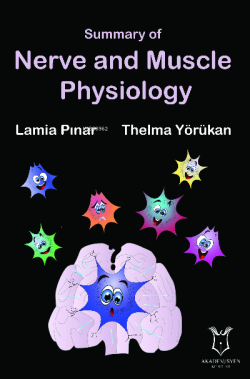

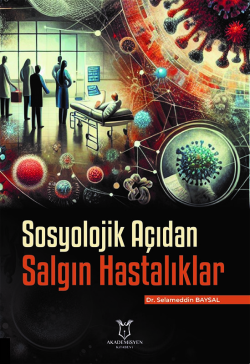
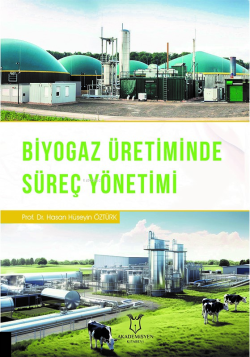
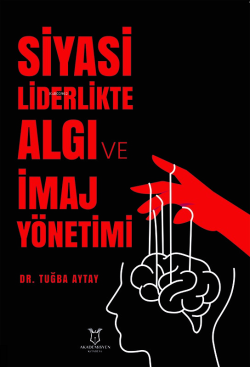
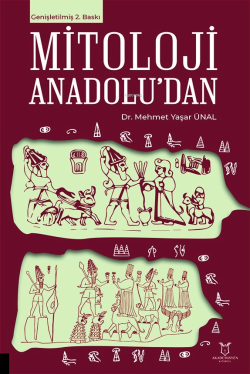
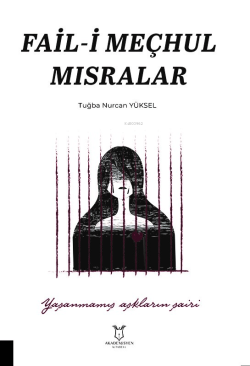
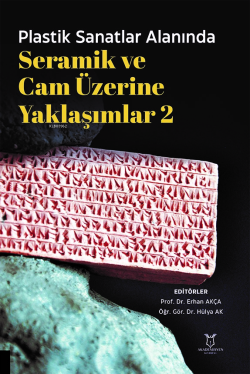
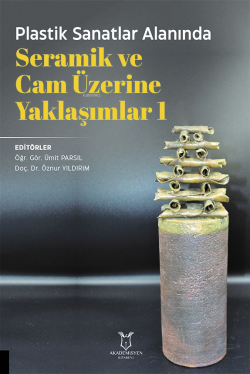

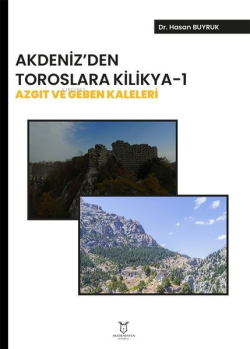
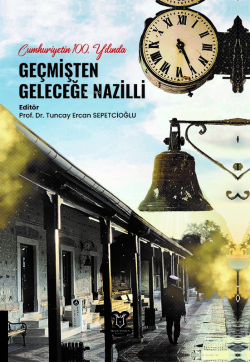
Yorum yaz